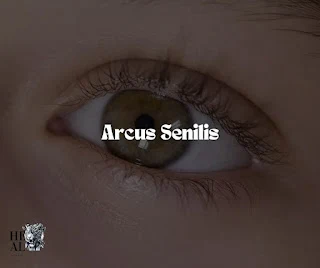Arcus Senilis
Arcus Senilis
Arcus Senilis is a common eye condition characterized by a crescent-shaped deposit of lipids (fatty material) appearing as a white, blue, or gray ring around the outer edge of the cornea. Ophthalmologists typically identify this condition during routine eye exams.
Understanding Arcus Senilis and the Cornea
The cornea, the transparent, curved layer covering the iris and pupil, acts as a protective "window" for the eye and aids in vision. Arcus senilis is frequently observed in individuals aged 50 to 60 years or older and is a natural consequence of aging. Nearly all individuals aged 80 or older exhibit arcus senilis.
In contrast, when this condition appears in individuals under 40 years old, it is referred to as "arcus juvenilis," which might indicate an underlying health issue.
Arcus Senilis vs. Cataracts
While both arcus senilis and cataracts are age-related eye conditions, they differ significantly in their impact on vision. Arcus senilis does not affect vision, whereas cataracts can lead to worsening vision and may require surgical removal. No surgical treatment is necessary for arcus senilis since it does not impair vision.
Causes of Arcus Senilis
Arcus senilis results from lipid accumulation around the cornea, forming distinctive white-gray rings. These lipids are primarily cholesterol. Although once linked to high blood cholesterol levels, individuals aged 50 to 60 years or older may exhibit arcus senilis without elevated cholesterol levels due to aging.
However, if the rings appear in individuals under 40 years old or in only one eye, it could indicate an underlying condition such as high cholesterol and triglyceride levels. An association has also been identified between corneal arcus and alcohol use disorder.
Who is at Risk for Arcus Senilis?
Arcus senilis is more common among individuals assigned male at birth (AMAB) compared to those assigned female at birth (AFAB). It is also more prevalent in African American individuals and those of Southeast Asian descent. Nonetheless, arcus senilis can develop in anyone, particularly with advancing age.
Managing Arcus Senilis
Typically, no treatment is necessary for arcus senilis when it is associated with aging and does not impact vision. However, further investigation is warranted in certain cases:
- Individuals under 40 or 50 years old.
- Presence of the ring in only one eye (unilateral arcus senilis), which could indicate carotid artery issues like carotid artery disease.
In such instances, healthcare providers will work to identify and address any underlying conditions responsible for the corneal arcus.
Preventing Arcus Senilis
While arcus senilis due to aging cannot be prevented, maintaining healthy cholesterol levels throughout life can help. Consider the following strategies:
- Quitting smoking.
- Regular physical activity.
- Maintaining a healthy weight.
- Adopting a heart-healthy diet, such as the Mediterranean diet.
When to Seek Medical Attention
Consult a healthcare provider if you notice any changes in your eyes, particularly the appearance of rings around the upper or lower parts of your corneas.
Impact on Vision and Health
Arcus senilis does not affect vision. Although the cloudy ring may appear concerning, it does not impair sight. Generally, arcus senilis is not dangerous, but it is a sign that may warrant further investigation to treat any underlying conditions.
For more information on arcus senilis, managing eye health, and maintaining healthy cholesterol levels, consult with your healthcare provider.

